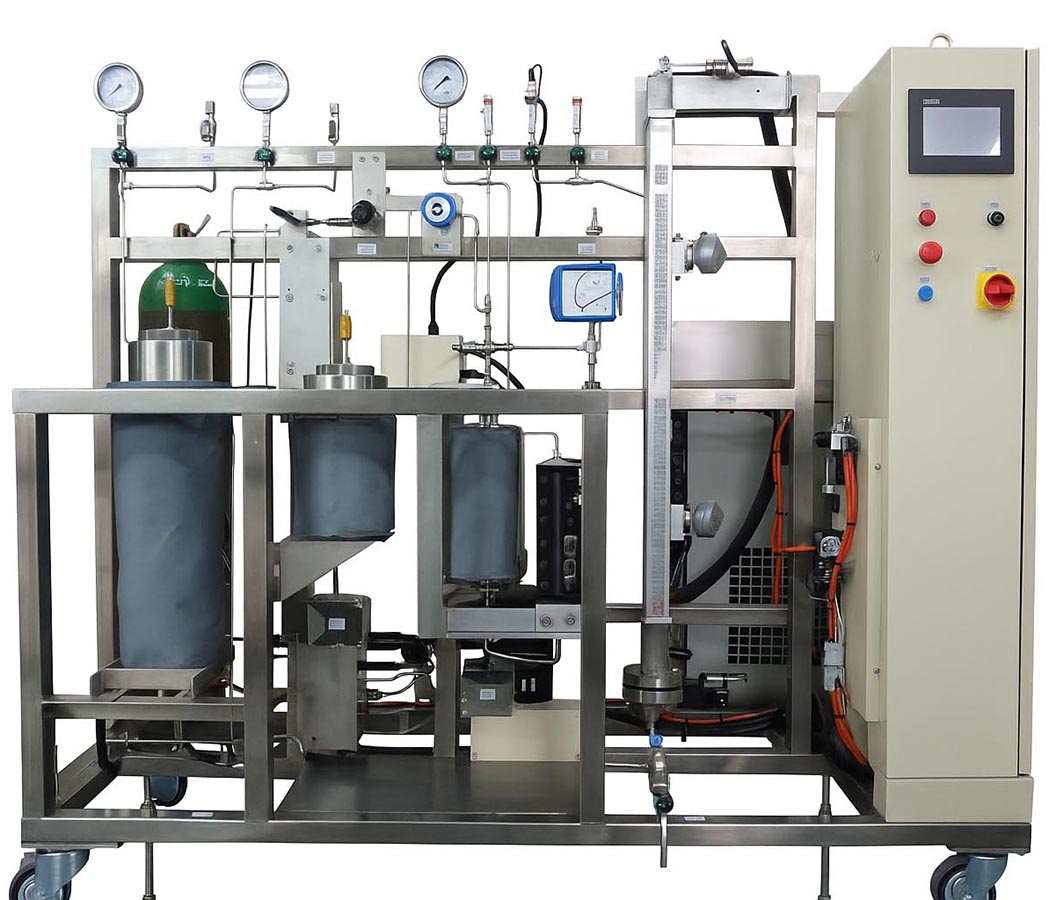
GE Power’s Supercritical Boiler Technology: Enabling the Next Generation of Coal-Fired Power Plants
Capable of withstanding temperatures close to 700°C, GE Power’s supercritical boiler technology is designed to support the next generation of high-efficiency coal-fired power plants.
When tasked with improving the efficiency of coal power plants around the world, Trevor Bailey and his team of engineers at GE Power faced a unique challenge:
How could they make the best technology even better — without compromising the integrity of the complex systems at the core of a coal-fired power station?
GE Power currently holds the record for operating the most efficient coal-fired power plants on the planet. The Rheinhafen-Dampfkraftwerk (RDK8) plant in Karlsruhe, Germany, which employs GE’s market-leading technology, achieved a new world record for net thermal efficiency while generating 912 MW of electricity during the past winter — a milestone that experts hailed as a significant breakthrough.
To further enhance overall plant efficiency, GE’s engineers have developed an advanced multi-stage steam reheat cycle.
Building upon the single-reheat supercritical design used in RDK8, where steam that has already powered the turbine is returned to the boiler for reheating, GE has pushed the concept further through double reheat technology.
In this dual reheat system, steam is returned to the boiler not just once, but twice, allowing more heat energy to be extracted and utilized to drive the turbine — thereby boosting the plant’s overall thermal efficiency.
Although double reheat technology has existed for decades, its adoption was historically limited by high costs. Between 1990 and 2015, no new power plants were built using this method. However, rising energy prices, stricter emissions regulations, and advancements in high-performance materials have made the technology both feasible and attractive again.
In alignment with GE Power’s mission of delivering smarter, cleaner energy, GE Steam Power Systems has developed a supercritical double-reheat variant capable of achieving unprecedented efficiencies of up to 49%, approximately two percentage points higher than RDK8’s record.
Extensive field testing has proven the reliability of this breakthrough, which GE believes will set a new standard for next-generation coal-fired plants.
The term “supercritical” refers to the physical state of water under extremely high pressure and temperature, where it becomes a supercritical fluid possessing the properties of both a liquid and a gas.
Using this technology, RDK8 operates at around 275 bar and 600°C steam conditions at the turbine inlet.
The new double-reheat technology from GE goes even further — achieving pressures near 330 bar and reheat temperatures approaching 670°C. For perspective, molten lava from a volcano ranges from 700°C to 1,200°C.
“We’re taking supercritical technology and pushing it even further,” Trevor explained.
“Double reheat has been around for years, but never at these temperatures and pressures. With our expertise, we’ve made the system not only more efficient but also more economical for our customers.”
Improving power plant efficiency is crucial — not only does it save operators significant fuel costs by generating the same amount of power with less fuel, but it also reduces carbon emissions.
A 0.5–1.5% increase in boiler efficiency can save up to 2 tons of fuel per hour, or 18,000 tons of coal annually, while a 1% gain in efficiency corresponds to a 2% reduction in CO₂ emissions.
“Our technology can immediately reduce emissions — a top concern for our customers and a key commercial advantage,” Trevor added.
Thanks to GE’s Fastworks development model — a rapid co-creation process involving close collaboration with customers — GE Power was able to bring this technology to market in just five months.
With growing demand for double-reheat systems in emerging markets such as China, where 10 dual-reheat units were commissioned in 2015 alone, GE Power is uniquely positioned to lead and accelerate this global trend through its most advanced and efficient technology portfolio.
GE Power has demonstrated that this innovation can significantly enhance efficiency and usher in a new generation of coal-fired plants that make measurable progress in reducing emissions.
Trevor Bailey views this as the next major leap in power generation — yet believes even greater milestones lie ahead.
“Once we’ve achieved a net plant efficiency of 49%, reaching beyond 50% is no longer out of reach,” he said.
“We’ll continue striving for even better solutions.”
Beyond Technology: GE Power’s Integrated Approach
Double-reheat technology is just one of the many innovations GE Power is using to improve plant performance worldwide.
Customers benefit not only from GE’s technology but also from its deep system-level understanding of power plants — enabling synergistic optimization across interconnected systems.
With over 230 years of combined experience, GE Power Services provides a comprehensive portfolio of whole-plant solutions, applicable to equipment built by over 90 OEMs.
These include planning, installation, maintenance, repair, and technology upgrades — supported by performance-based service agreements.
GE also offers scalable plant-wide modernization, asset relocation, and quality assessments to maximize productivity, even for non-GE equipment.
Moreover, GE equips customers with digital analytics tools for real-time data monitoring and predictive maintenance, helping them avoid unplanned downtime and improve cost efficiency.
These adaptable solutions address the diverse operational needs of customers throughout the plant lifecycle — encompassing steam turbines, generators, boilers, AQCS, as well as fuel, water, and energy management systems.
Through these capabilities, GE has helped enhance power plant performance in over 150 countries, advancing the global transition toward cleaner and more efficient energy.
Author: Chi Mai